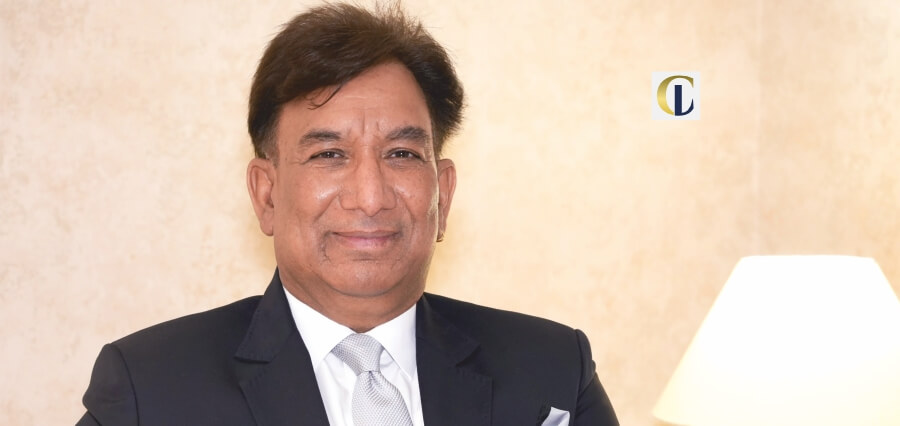“Water is life, and the way we manage life, we must manage water, too, efficiently. Our true impact lies in linking policy with people, and innovation with enduring change”
– Dr. Satbir Singh Kadian.
In the vast and typically water-scarce terrains of Haryana, northern India, the tale of Dr. Satbir Singh Kadian is a shining example of hope and pragmatic change. For his colleagues and people at large, a widely well-known engineer, disciplined public administrator, and an inspirational leader, Dr. Kadian has always been a lifelong devotee of a mission – to transform water management. His ever-increasing influence might have journeyed across strategically important roles within Haryana’s administration. For managing multi-billion-rupee projects and informing state-level policy. However, it is in the personal mission of his native village, Beholi’s transformation, that Dr. Kadian’s most inspiring legacy comes to full flower: a tale of how an individual’s vision, driven by personal passion and international know-how, transformed a stark reality into a thriving exemplary of sustainable living.
Where Roots Run Deep, Change Begins: A Commitment to Water Resilience
In the rustic rural landscape, a village, located in the Samalkha block of Panipat district, Haryana, Beholi, was not a dot on any map for Dr. Satbir Singh Kadian. Rather, a part of his consciousness, it was his warm home. Raised in a farming family, with a father being a respected elder in the traditional community council that imbued within him a profound sense of service and grassroots responsibility, Dr. Kadian saw firsthand the unseen battle against the water deficit. Conventional farming practices, combined with shifting climate patterns, had rendered many areas, his own included, persistently water deficient. The very lifeblood of the community was under threat, impacting livelihoods and fostering a sense of despair. This personal connection to the land and its people became the profound catalyst for his life’s work. He envisioned a future where water, the essence of life, would be managed not just efficiently, but sustainably and equitably, starting right where his roots lay.
From Global Wisdom to Local Oasis: The Beholi Blueprint
With a strong educational background—a degree in engineering from Thapar Institute, a Ph.D. from IIT Delhi in Functional ERP Systems and Sustainability, and executive education from Harvard and Israel’s MASHAV in water regulation—Dr. Kadian had an unusual combination of technical expertise and international policy understanding. He had extensively traveled the globe, learning from the world’s best water management systems. But his genius lay in his ability to translate this international expertise into ground-level action. For Beholi, he championed a revolutionary blueprint for water-efficient governance. This wasn’t about imposing external solutions; it was about adapting global wisdom to local needs, fostering ownership, and creating a replicable model that could be applied elsewhere. The plan was clear: make Beholi a self-sustaining, water-independent village that proved sustainability to be not a theoretical idea but a real, palpable possibility.
A Practical Classroom: Grassroots Innovation
Beholi was taken into a revolution under Dr. Kadian’s direct guidance. The village adopted organic farming, departing from water-guzzling chemical methods. Most critically, solar irrigation systems were brought in, offering a clean and efficient substitute for old, often untrustworthy, water-pumping strategies. Maybe most importantly, the highly praised Seechewal model of decentralized wastewater management was established, allowing water to be reused and conserved in the village system. Its core was Dr. Kadian’s Model Farm, started in 2016. The farm turned into a ‘practical classroom’ and more than 15-20 farmers visit it every day, with regular educational tours. It was a field demonstration of sustainable agriculture at work, motivating future generations and promoting behavioral change in water utilization through water literacy modules and street theatre activities. This community-based activism, empowering local communities and especially women groundwater volunteers (Bhujal Sahelis), was typical of his faith in participatory approaches based on the community. Joint ventures with global partners, such as Israel for wastewater reuse and Finland for pond revitalization, enriched Beholi’s innovative mind further and demonstrated how global collaborations could strengthen local solutions.
A Ripple Effect: Beholi’s Legacy and Beyond
The success of Beholi is more than a local success story; it’s an uncompromising statement of Dr. Kadian’s philosophy of connecting policy, people, innovation, and impact. The village is now a shining example of how integrated water resource management can result in better livelihoods, resilient communities, and turning back migration from water-scarce areas. Beholi’s success has not only ensured its own future but has also offered priceless lessons and a concrete template for Dr. Kadian’s larger projects, like the ‘Water Secure Haryana’ blueprint—a visionary ₹5,700 crore plan for statewide water sustainability. His experience in Beholi directly translates into his leadership of national programs such as the Atal Bhujal Yojana and the Integrated Water Resources Action Plan (IWRAP), illustrating how grassroots innovation can be scaled up to shape state and national policy. Dr. Satbir Singh Kadian, a technocrat of uncommon distinction and a Fellow of the Institution of Engineers (India), continues to inspire transformative change. His legacy, however, is not in the policies he writes or the projects he manages, but in the living, breathing oasis he helped build at Beholi, demonstrating that if one has clarity of purpose and disciplined implementation, a water-secure future becomes possible for everyone.





